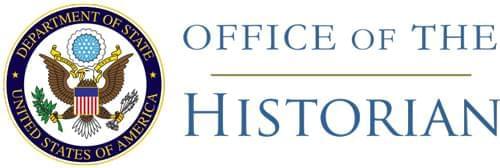761.93/9–1345: Telegram
The Ambassador in China (Hurley) to the Secretary of State
[Received September 14—8:01 a.m.]
1574. Embassy requested Ward to report on following four points (Embassy’s 1540, September 7, to Dept. Repeated to Moscow):
- 1.
- Is there a war going on, or are these tribal or sectional disputes?
- 2.
- Who is fighting?
- 3.
- What arms and equipment are being used?
- 4.
- What are they fighting for?
Ward’s replies dated September 8 are summarized below:
- 1.
- A revolution is occurring which revolting elements consider as a revolutionary war and which Chinese consider as bandit activity incited by Soviets.
- 2.
- Those taking part are Kazak, Kirghiz and some Uighur tribesmen, with some active and widespread tacit support from Muslim majority of general populace.
- 3.
- Most effective insurgent weapons are rifles and fast horses. Although some units are apparently well-armed with mortars, machine guns and possibly some anti-aircraft guns, some non-official sources indicate that not all possess rifles. Originally, tribesmen undoubtedly had some arms themselves; some have been turned over to them by provincial forces going over to rebels and some have been captured from Chinese. While some arms probably have been obtained from across border, it is impossible to secure accurate reports as to type and number.
- Chinese reports state that fighters and bombers have both been used in Wusu and Chingho raids. A secretary, acting as Chairman’s representative and talking on authority of Chief of Staff Wang, informed Ward that three red stars were seen in each plane which bombed Wusu September 5. General Chu and Chairman Wu seem to [Page 1011] believe sincerely that airplanes are Soviet, although their conclusion seems to be based on assumption that planes could not be anything else under circumstances. Ward states that a well-informed and intelligent Chinese postal official recently returned from Wusu gave him most sensible explanation of origin of planes; namely, that they were among 50 (sic) left on Ining air field by Chinese, and that Soviets gave rebels technical aid in repairing them. Ward states that other information from Chinese appears to confirm theory that planes are Chinese. (Sent to Department. Repeated to Moscow.)
- 4.
- Rebels assert they are fighting to break Chinese minority rule over “East Turkestan”; to assure proportional representation of each race in new government of East Turkestan; to obtain equality of all races in East Turkestan; to establish native army; to make impossible one-man government; to place village, city and district governments in hands of locally-elected residents; to reestablish trade with Soviets; to reduce present unbearable taxation by reducing sharply military and police establishments which necessitate such taxation; to free persons imprisoned for attempting to assist people; to check Chinese immigration and (forced?) transportation of nationalities; to secure freedom of religion; to save people from forced labor in fortifications, trenches and other work which benefit only Chinese; to build new irrigation systems. Ward remarks that objectives given above are rough translation from rebel propaganda pamphlet, Why Are We Fighting?
Ward reported in telegram September 2, delayed in transmission, that neither Chairman Wu or General Chu seem to be hopeful that warfare in Sinkiang can be settled this winter, and these officials appear to concur in native opinion that severest fighting will take place in November and December. Ward states failure of Chinese to comprehend nature of revolt and their conviction that it is inspired and directed 100 percent by Soviets has caused sharp increase in suspicion and hostility since conclusion of Sino-Soviet pact which Sinkiang authorities expected vainly would be followed by peace in Sinkiang.
